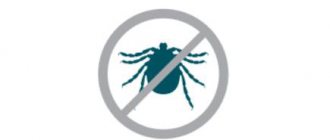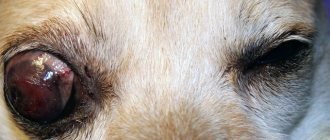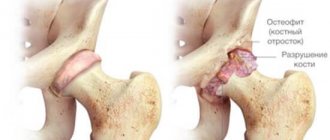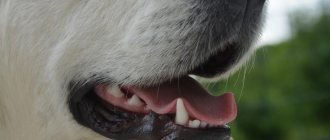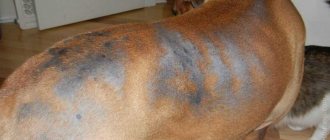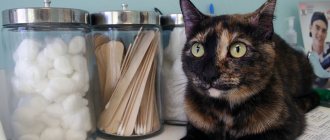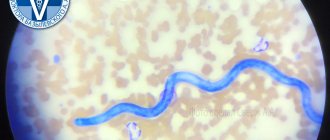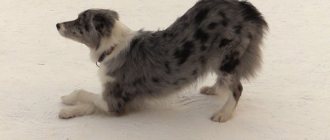Dogs, just like people, can suffer from diseases that develop in the oral cavity. This mainly occurs due to lack of proper dental hygiene, but there may be other reasons. One of the most common dental diseases is periodontal disease.
Many owners underestimate the danger of this disease; however, in the absence of timely treatment, it can lead to serious consequences - from tooth loss to gastrointestinal pathology.
About periodontal disease in dogs
Stone deposits and bacteria do their job - the gums around the teeth become inflamed and lag slightly behind the walls, a kind of pockets are formed in which bacteria and plaque accumulate with a vengeance. The walls of the tooth are exposed deeper and deeper, which leads to tooth loss in the future.
The gums around the teeth are inflamed.
Possible loss of teeth.
Accumulation of a large number of bacteria.
Risk group
Periodontal disease is more common in older dogs, but some breeds have a hereditary predisposition. For example, Chihuahuas are naturally prone to periodontal disease, and this disease is most often diagnosed in them.
Chihuahua dogs are prone to illness.
Stages of development
The development of periodontal disease is a rather long process that occurs in several stages.
The process of development of periodontal disease begins with bacteria, which, together with food debris, form primary plaque.
Due to the lack of natural mechanical cleaning of teeth with rough food or cleaning with a toothbrush, plaque along with food mineralizes and hardens, thus forming tartar.
Bacteria settle and multiply on tartar and under the gums, which can subsequently cause gingivitis. After some time, bacteria and microorganisms penetrate into the deeper layers of the periodontium, which leads to the destruction of the dental alveoli.
The teeth begin to wobble and subsequently fall out.
Gingivitis is inflammation of the gums.
Causes of periodontal disease
Periodontal disease develops in dogs for the same reasons as in humans.
The only difference is that humans can maintain proper oral hygiene, but dogs cannot do this on their own.
Let's look at the most common causes of the disease:
- Wrong diet . If a dog eats too soft food or special food, the canines and incisors are not loaded. Food settles on the teeth and gets clogged under the gums. Putrefactive processes begin, causing the growth of harmful bacteria around the teeth.
- Diseases lead to a decrease in the dog’s immunity, which has a beneficial effect on harmful bacteria in the oral cavity . They begin to multiply rapidly, forming hard stone deposits and causing inflammatory processes in the gums.
- A monotonous diet and a lack of vitamins in it cause vitamin deficiency in the dog . The general condition of the dog worsens, diseases appear, including the teeth and gums.
Too soft food is one of the causes of periodontal disease.
The difference between periodontal disease and periodontitis
Many owners who are just faced with problems in the oral cavity cannot understand the difference between periodontal disease and periodontitis. Their situation is aggravated by some resources with false information, where they usually “pass off” periodontitis as periodontal disease.
Let's look at the differences between these two seemingly similar diseases.
| Periodontitis | Periodontal disease |
| Always accompanied by INFLAMMATION | INFLAMMATION is absent or rare |
| More often LOCAL distribution | AFFECTS ALL TEETH |
| Developing FAST | Develops SLOWLY |
| BLEEDING is always observed | BLEEDING during eating or not observed |
| TEETH MOBILITY at the initial stage of the disease | TEETH MOBILITY appears at a late stage of the disease. |
| GUM SWELLING is well expressed | There is no swelling of the gums |
| LARGE periodontal pockets | periodontal pockets SMALL |
Symptoms and diagnosis
In order to suspect something is wrong in time, you need to look into your pet’s mouth more often.
- The first sign of the disease is bad breath . Of course, this symptom cannot be called characteristic only of periodontal disease. An unpleasant odor also appears due to various problems in the functioning of internal organs. For example, with gastrointestinal diseases, diabetes, constipation, and helminthic infestations, a terrible odor from the mouth may also be observed.
- Deposits around the teeth, yellowing of the enamel and bleeding gums are signs that you should pay close attention to. Due to sore gums, your pet may refuse to eat. You can also observe the following picture: the dog is looking forward to its portion, and when it receives it, it eats very sluggishly and with extreme caution. Some dogs experience increased drooling, and the drool may have a scarlet tint of blood.
- Having examined the gums more carefully, you will notice that they are red and inflamed . Over time, it is clear that the dog’s teeth begin to become loose and then fall out.
Bad breath may be a symptom of illness.
Symptoms of periodontal disease must be responded to immediately, otherwise the animal risks remaining completely toothless. And inflammatory processes can lead to more terrible consequences, for example, the death of the animal.
Treating a dog at home
If your dog begins to accumulate plaque on his teeth, reconsider his diet.
Large bones are given to animals not only for entertainment; they can use them to brush their teeth. Raw vegetables help remove soft deposits. Carrots are good not only for the stomach, they will cope perfectly with the beginning of dental plaque. You can offer your dog cabbage or Jerusalem artichoke. If your pet has not been accustomed to such delicacies since childhood, he may refuse the treat. In this case, go to the pet store for hygiene supplies for your dog: gel and a toothbrush.
A large bone will help your dog clean his teeth.
The animal may not like the procedure of brushing its teeth . It must be carried out as carefully as possible so as not to injure the dog’s gums, otherwise an aggressive animal may bite.
Prevention
The treatment process takes quite a long time and is painful for the animal. Therefore, as we know, the best treatment for a disease is its prevention.
To prevent the occurrence of periodontal disease, it is necessary to observe simple hygienic manipulations in the pet’s oral cavity. You should brush your animal’s teeth on a regular basis; for this you need to purchase a special brush at a pet store; for complete protection, you need to brush with special pastes.
If the animal is difficult to clean, then you can use an alternative option that is more convenient for the owner - dog bones, they can be bought at any pet store. Their big advantage is the natural mechanical cleaning of teeth and their strengthening.
Much attention should be paid to nutrition. The right food will ensure a healthy mouth and body as a whole.
Immediate treatment of gingivitis, which contributes to the accumulation of microorganisms and the subsequent development of periodontal disease. Removing plaque and stone at its first appearance. Check the condition of your dog's teeth and gums on a regular basis.
Immunity
When diagnosing periodontal disease, your pet needs to support and strengthen its immune system, this will allow it to quickly cope with inflammation and prevent the progression of the problem.
The veterinarian will prescribe vitamin preparations to strengthen the body’s defenses and recommend how to choose the right food for the dog. If the animal cannot eat due to terrible pain, it will be necessary to temporarily switch to parenteral feeding.
To strengthen the dog's immunity, vitamins are prescribed.
Removal or treatment?
A diseased tooth that cannot be treated must be removed by a specialist. After all, if a dog accidentally breaks it on food, fragments will remain in the gums, which will provoke further inflammation and damage nearby teeth.
A tooth that cannot be cured must be removed.
Teeth that can still be saved are filled. All affected ones are removed so that the remaining ones do not begin to deteriorate. After tooth extraction, the doctor may send you for an x-ray to check the quality of the operation.
How to treat?
In case of periodontal disease, in order to relieve inflammation and eliminate harmful microflora in the mouth, antibiotics and glucocorticoids are prescribed.
with herbal decoctions helps very well . You can use calendula, chamomile, and sage to brew and sprinkle in your pet’s mouth. At the pharmacy you can buy a ready-made rinse - Rotokan , it is diluted with boiled water and irrigated the dog’s mouth.
Calendula decoction is good for inflammation.
Prevention
In order not to encounter periodontal disease in your dog, it is necessary to start preventing the disease as early as possible. Toothpastes are sold in pet stores, and toothbrushes are purchased there. At the first symptoms of plaque, it is carefully cleaned off.
Brushing your teeth prevents periodontal disease.
It is better to purchase a protective gel . It prevents bacteria from multiplying and entering the space between the teeth and gums. The gel is very convenient, because it can be used only 2-3 times a week. The dog will not feel any smell or unpleasant taste when applying the gel, so the procedure will not cause aggression. The gel does not require rinsing, which makes caring for your pet’s oral cavity much easier. It must be applied to both the inner and outer surfaces of the teeth. For application use a brush, or can be applied with a cotton swab. As a last resort, when the dog does not give in, you can try applying the gel with your finger.
With your own hands!
At-home methods include rubbing your dog's teeth with tomato paste.
It is enough to wipe your pet’s teeth daily with a napkin soaked in tomato paste to remove softened tartar with a wooden spatula after two weeks.
Tomato paste will help remove tartar.
If you doubt folk remedies or are afraid to carry out the cleaning procedure yourself, visit a veterinary clinic. There, the dog will be cleaned of all deposits, any stones that have formed will be removed, and recommendations will be given for further care of the pet’s oral cavity. The procedure can be performed under anesthesia, and if the dog is small and non-aggressive, then with the use of a special device that does not allow the jaws to close.
Treatment
The course of recovery depends entirely on the condition of the dog’s periodontium. If the source of inflammation has not yet affected the bone tissue, the veterinarian applies conservative treatment. First, he carries out ultrasonic cleaning to remove plaque and other deposits. Next, it stops the degeneration with antibiotic drugs. Additionally, mouth sanitation is prescribed.
The doctor must examine the patient
The therapy is entirely aimed at preserving healthy molars. But if the pet is diagnosed with mobility of some incisors, they are removed. Along with surgical intervention, the specialist removes all purulent accumulations, preventing inflammation from spreading further.
Filling is practiced in European countries, but in Russia this method is not used.
During treatment, the patient is prescribed a strict diet. In most cases, this is veterinary food, the granules of which have an optimal degree of hardness. Simply put, they are not too hard and not too soft. The duration of the diet is determined by a veterinary dentist.
Below is a list of medications that are used to control periodontal disease in dogs. Please note that the table is for informational purposes only. You should not self-medicate - this can be an additional blow to your pet’s body!
| Name | View | Country of origin | Average cost in Russian rubles |
| 8 in 1 Dental Breath Tabs | Pills | USA | 300-700 |
| Dental Pet Spray | Spray (with toy) | Italy | 300-500 |
| Dentavedin | Gel | Russia | 60-100 |
| Nibbler Cristal Line | Gel Spray | Russia | 100-300 200-400 |
| Products of Hartz Mountain Corporation | Pastes Brushes Records | USA | 100-400 |
conclusions
Make sure your dog doesn't chew on metal objects.
Proper nutritious food, hard bones and cartilage, brushing teeth, timely treatment of diseases and daily walks in the fresh air - that’s all that will keep your dog in great shape. Another tip is to watch what your pet puts in his mouth. Metal objects can damage tooth enamel, so they are not used as toys.
How to prevent periodontal disease
The entire situation described above can be avoided if you carefully monitor the health of your pet. To do this, you actually need very little. Naturally, you need a balanced diet. In modern life, everything is done to simplify the process of life as much as possible.
For both people and animals, markets are overflowing with fast food and fast food. Ready-made pet food is also a kind of fast food, even though it is rich in vitamins and minerals. Ready-made canned food is too soft to keep dogs' teeth healthy.
Dry food will help with this, but in large quantities and constantly taken, it leads to slagging of the stomach and intestines, as well as the formation of urolithiasis. Everything is good in moderation. The dog needs boiled food, which is alternated with solid foods. These can be boiled porridges or soups.
All dogs are predators. They need hard food. You can alternate porridge with dry food and bones. If it is problematic to give natural bones to a dog, then veterinary stores are filled with gelatinous bones, individually developed for each dog breed. Depending on the size of the animal and the structure of the jaws, you can choose the most suitable one. It is also important to brush your teeth at least three times a week with a brush and special toothpaste. Human paste is prohibited! It contains substances that adversely affect the health of the animal.
The most obvious way
You can apply a chlorhexidine solution to your pet's toothbrush. Brushing your teeth daily can reduce tartar by 42-49%. Also, when brushing your teeth, the gums are also massaged, which helps to hold the tooth itself more firmly and not become loose. And this is partial protection against the penetration of microbes into the root system of the teeth. Brushing a pet's teeth with a toothbrush requires a lot of effort from the owner himself.
Sometimes this causes difficulties, especially if the dog has not been accustomed to such a procedure since childhood. To achieve this, owner involvement can be reduced. There are not only edible gelatin seeds, but also special collagen-based seeds that have an abrasive effect. It is very important not to let your dog play with extremely hard objects. This can damage the surface of the tooth, chip the enamel, or even the tooth itself.
In the modern world, an animal is completely dependent on humans, and only we can protect its illnesses and pains. We don't need too much - just monitor the health of our dog and provide the necessary care, as well as ourselves. This, of course, applies to those who want to see their pet as a member of the family for many years.
